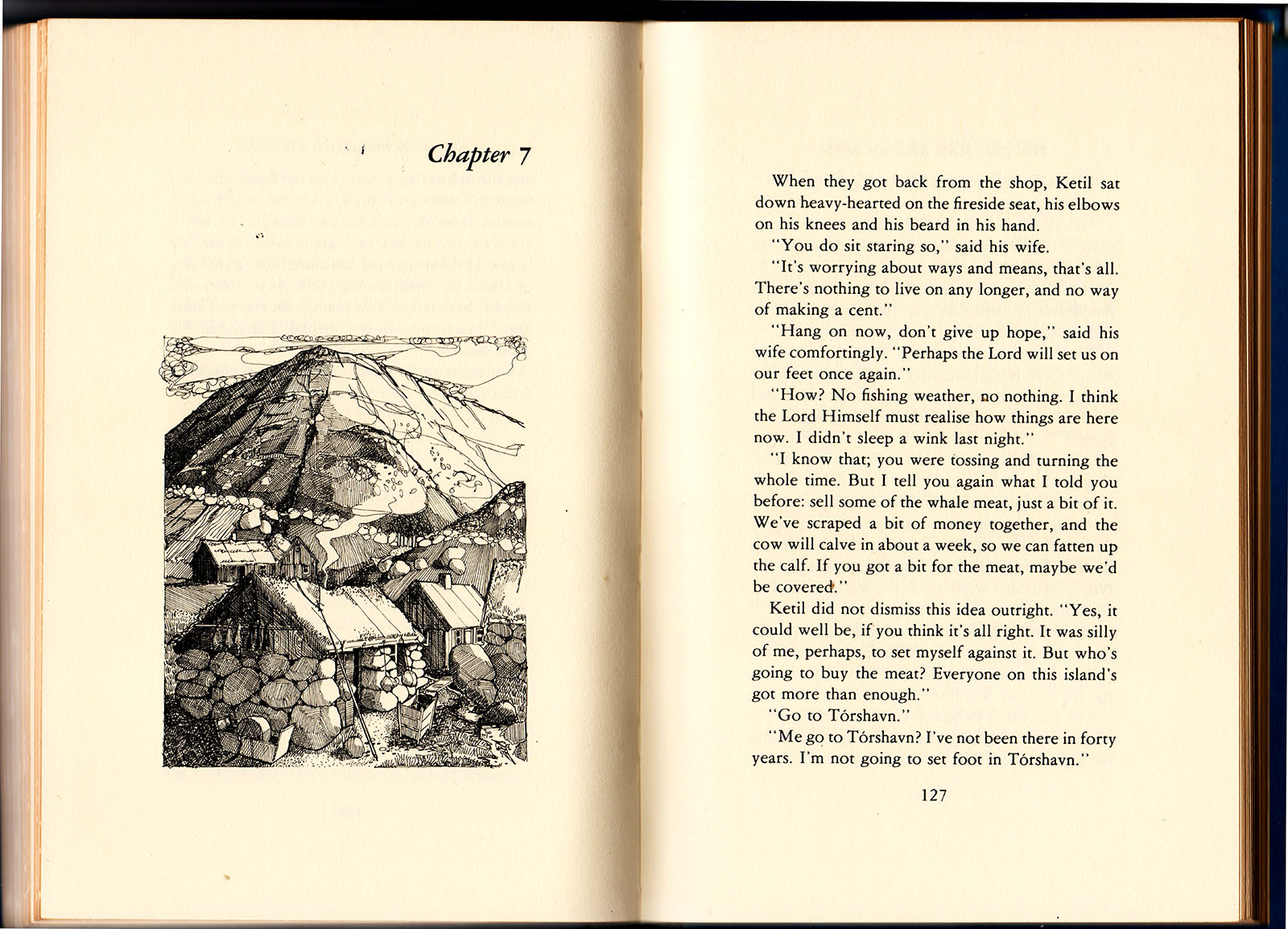
The Old Man and His Sons. (In the Faroese edition, the title is Feðgar á ferð.) By Heðin Brú. Published in Faroese, 1940. English translation by John F. West, 1970.
I got from this book just what I hoped to get — an impression of life in the Faroe Islands before the modern era. Given that the novel was published in 1940, I would assume that the novel’s period would be the 1930s.
Ketil and his wife are old, old-fashioned, and very poor. They live in a cottage with a turf roof. Their chickens roost on the ceiling beams at night, and the cow lives on the other side of the wall. In their fireplace they burn peat. They don’t like eating with forks. When the weather is bad, they stay in by the fire to spin wool and knit sweaters to sell. They have grown sons, all of them married and living nearby, and all of whom want a more modern and more comfortable way of life.
There is not much plot in this novel, and no doubt that’s how it should be. The range of experience available to a Faroese villager born around 1865 is not going to be very great. Village life is everything. People look out for each other, but they also gossip and condemn. A cow, an old boat for fishing, and a place to grow potatoes are enough to subsist on. Money is hard to come by. One is always aware of the sea and the weather.
The book includes an excellent introduction by the translator, John F. West. The introduction includes a brief history of the Faroe Islands and a somewhat more detailed history of Faroese literature. West writes:
“The reader may well ask how it happens that a miniature nation of 38,000 people [now about 55,000] manages to throw up such a wealth of literary talent. It is a result, I think, of the vivid sensation of community membership that a citizen of such a small nation inevitably feels. Anyone with talent tends to shoulder his artistic responsbility, whereas in a larger community, many a potential author is prepared to leave it to the other fellow.”
In other words, in such a small nation, nothing can be wasted, including people and their talents.
The bleak island beauty of the Faroe Islands, and its location in the wild North Atlantic, appeal to me. I have a fantasy of visiting there someday. But the food! I suspect that the Faroese diet can’t have changed all that much. The only crops mentioned in the novel are potatoes and barley. Everything else comes from the sea, or from the sheep, or from the cow. Today there are regular ferries to the Faroe Islands from northern Denmark, but Denmark does not have the best soil (or the best cuisine) in the world. I will not be looking for a Faroese cookbook.


“I will not be looking for a Faroese cookbook.”
🙂